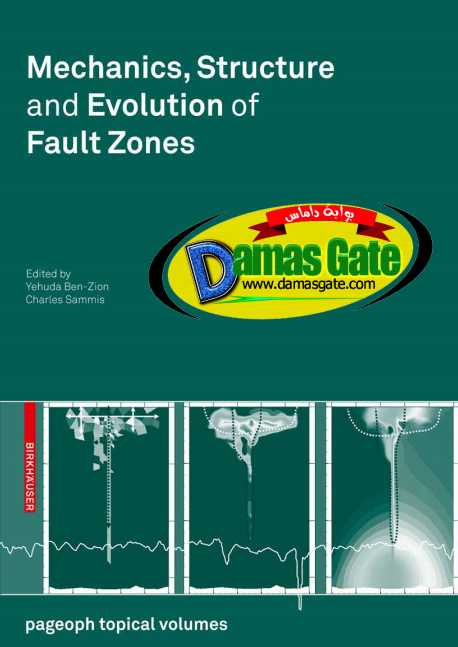Mechanics, Structure and Evolution of Fault Zones

Abstract—We combine detailed mapping and microstructural analyses of small fault zones in granodiorite
with numerical mechanical models to estimate the effect of mesoscopic (outcrop-scale) damage zone fractures
on the effective stiffness of the fault zone rocks. The Bear Creek fault zones were active at depths between 4 and
15 km and localize mesoscopic off-fault damage into tabular zones between two subparallel boundary faults,
producing a fracture-induced material contrast across the boundary faults with softer rocks between the
boundary faults and intact granodiorite outside the boundary faults. Using digitized fault zone fracture maps as
the modeled fault geometries, we conduct nonlinear uniaxial compression tests using a novel finite-element
method code as the experimental ‘‘laboratory’’ apparatus. Map measurements show that the fault zones have
high nondimensional facture densities (>1), and damage zone fractures anastamose and intersect, making
existing analytical effective medium models inadequate for estimation of the effective elastic properties.
Numerical experiments show that the damage zone is strongly anisotropic and the bulk response of the fault
zone is strain-weakening. Normal strains as small as 2% can induce a reduction of the overall stiffness of up to
75%. Fracture-induced effective stiffness changes are large enough to locally be greater than intact modulus
changes across the fault due to juxtaposition of rocks of different lithologies; therefore mesoscopic fracturing is
as important as rock type when considering material or bimaterial effects on earthquake mechanics. These
results have important implications for earthquake rupture mechanics models, because mesoscopic damage zone
fractures can cause a material contrast across the faults as large as any lithology-based material contrast at
seismogenic depths, and the effective moduli can be highly variable during a single rupture event.
Download
*